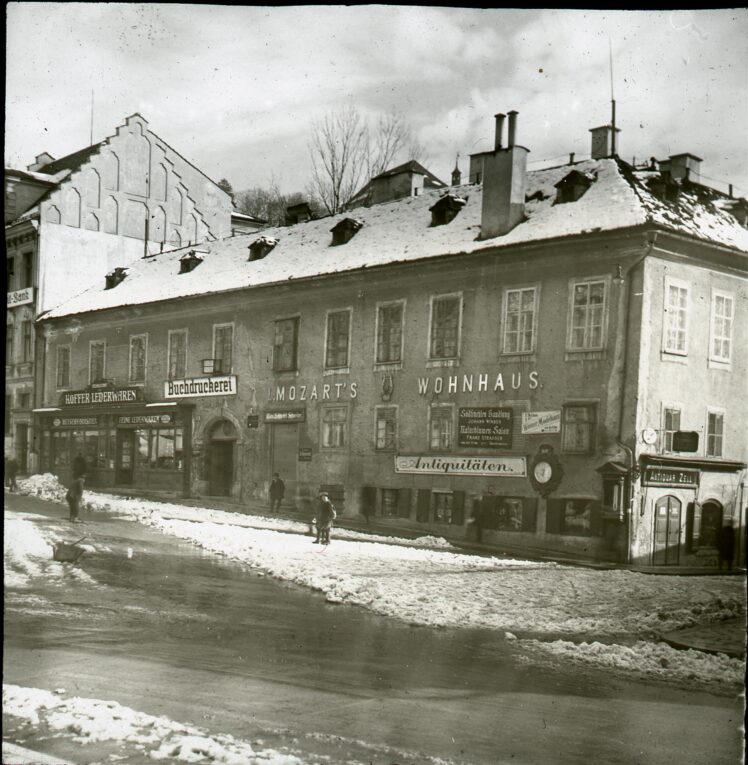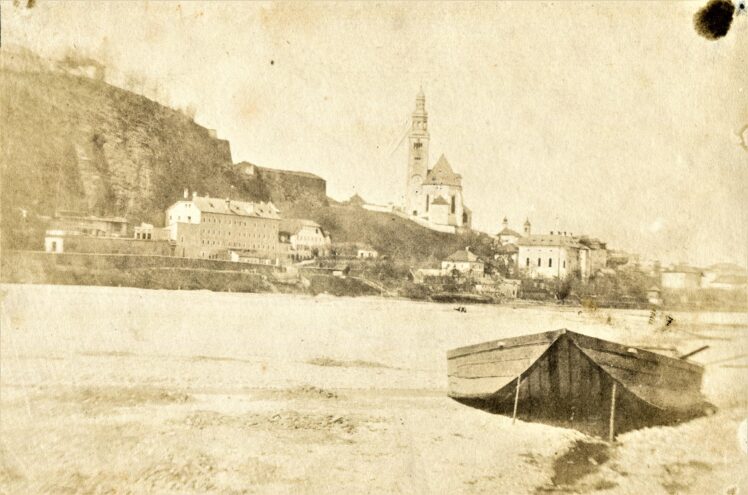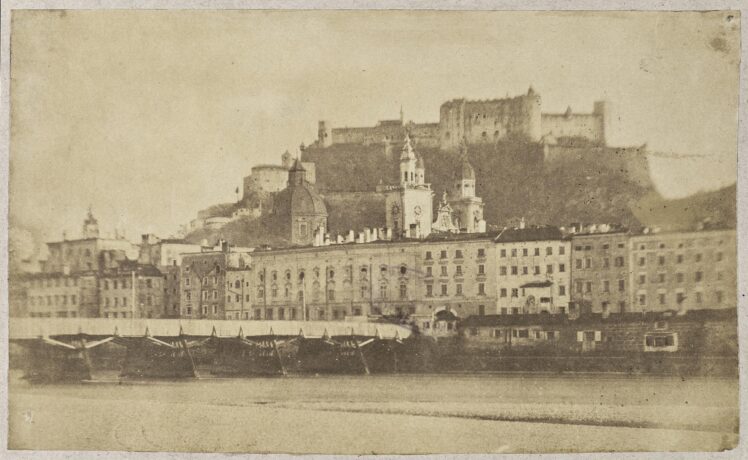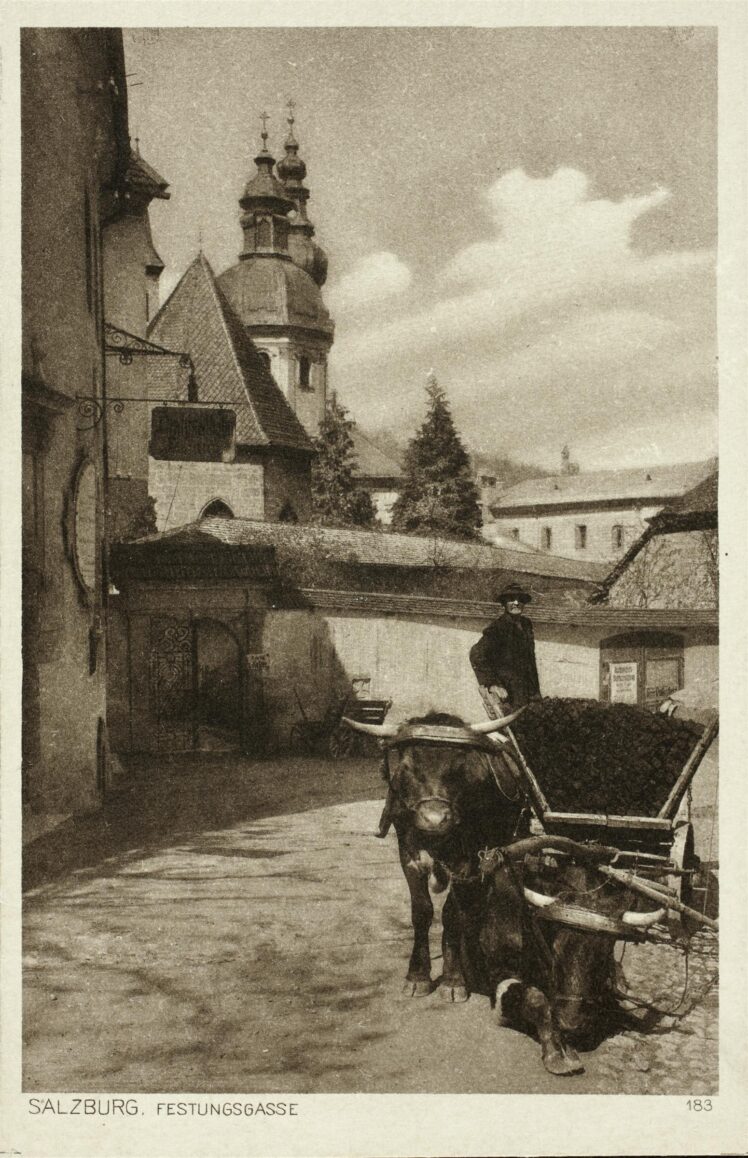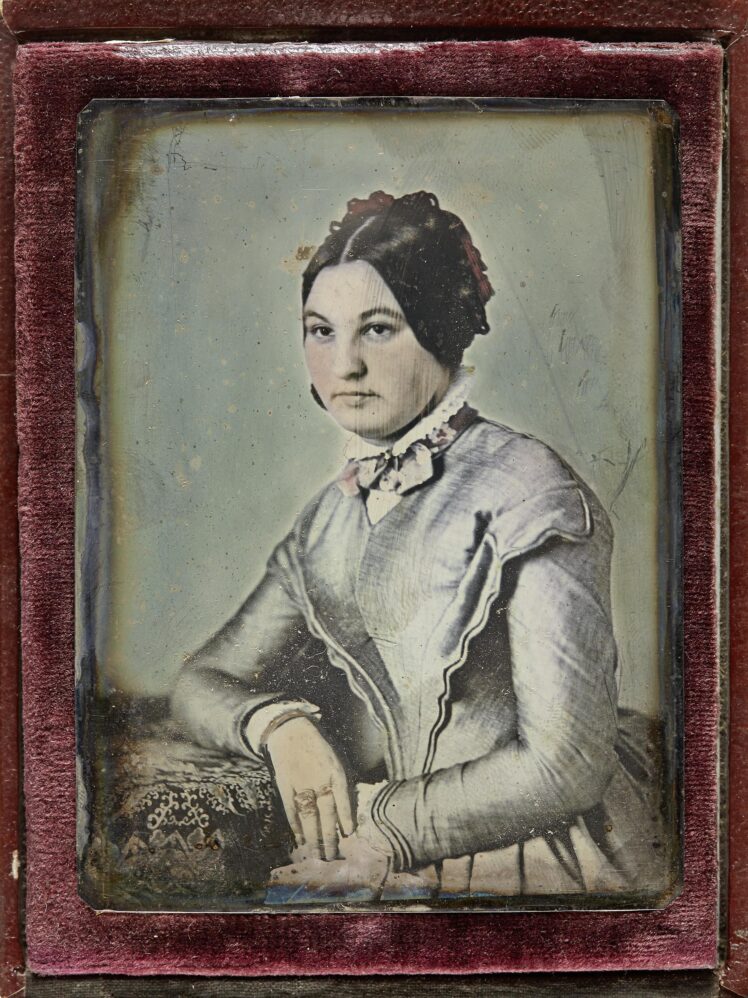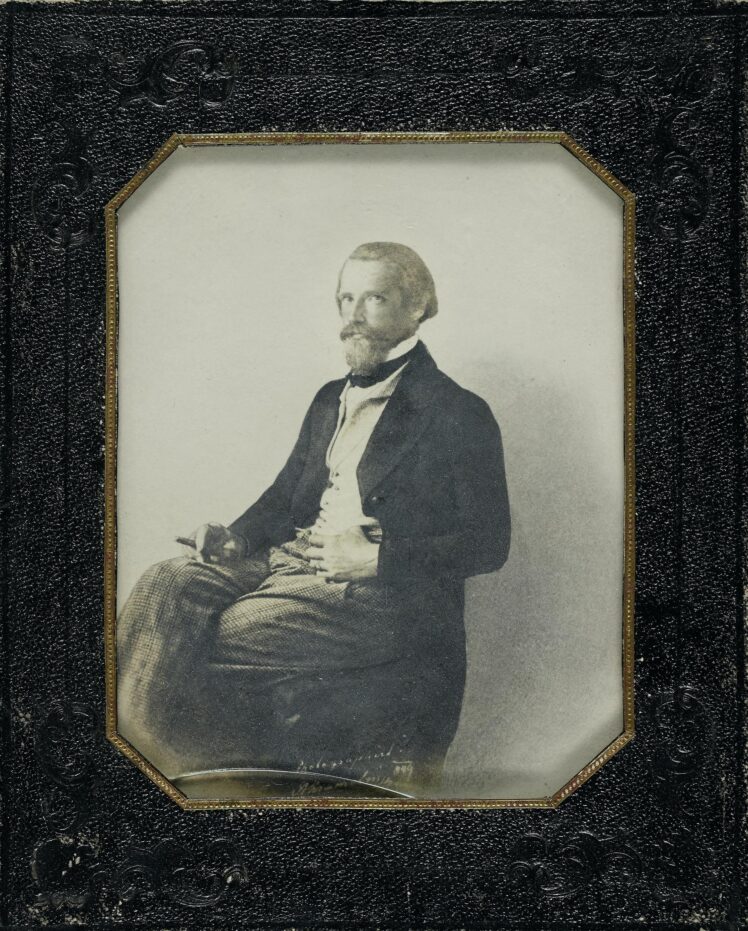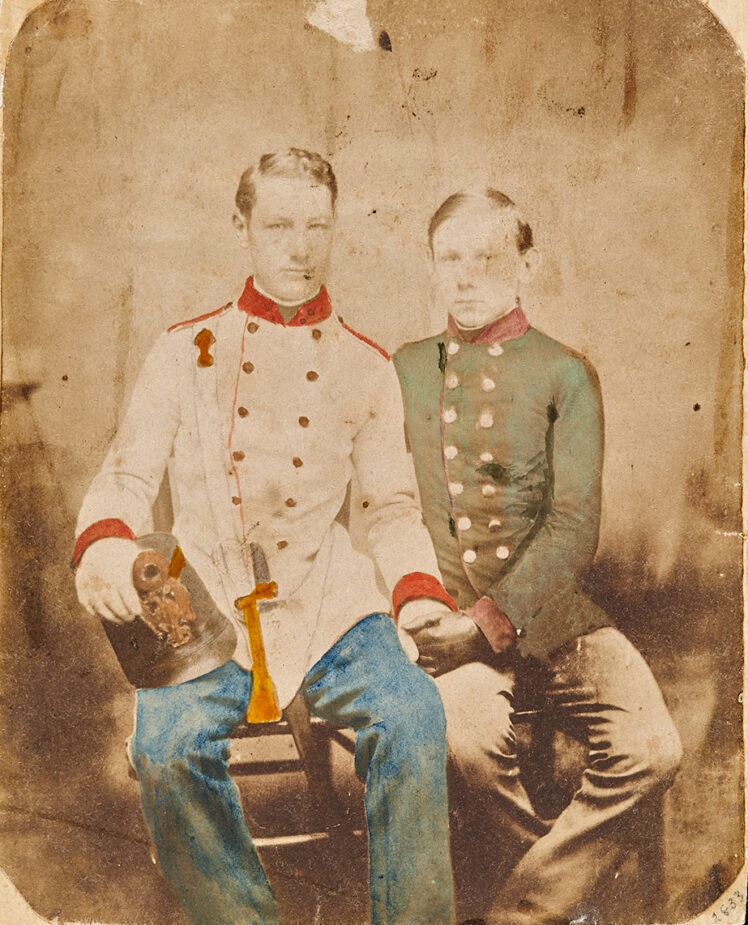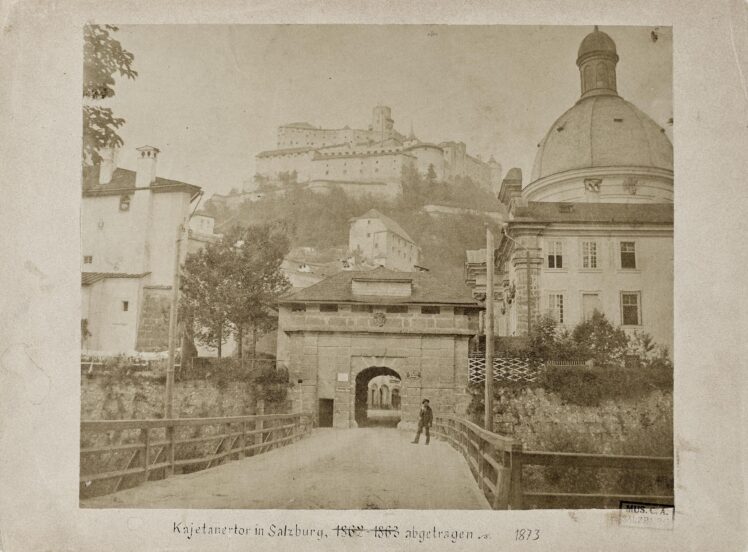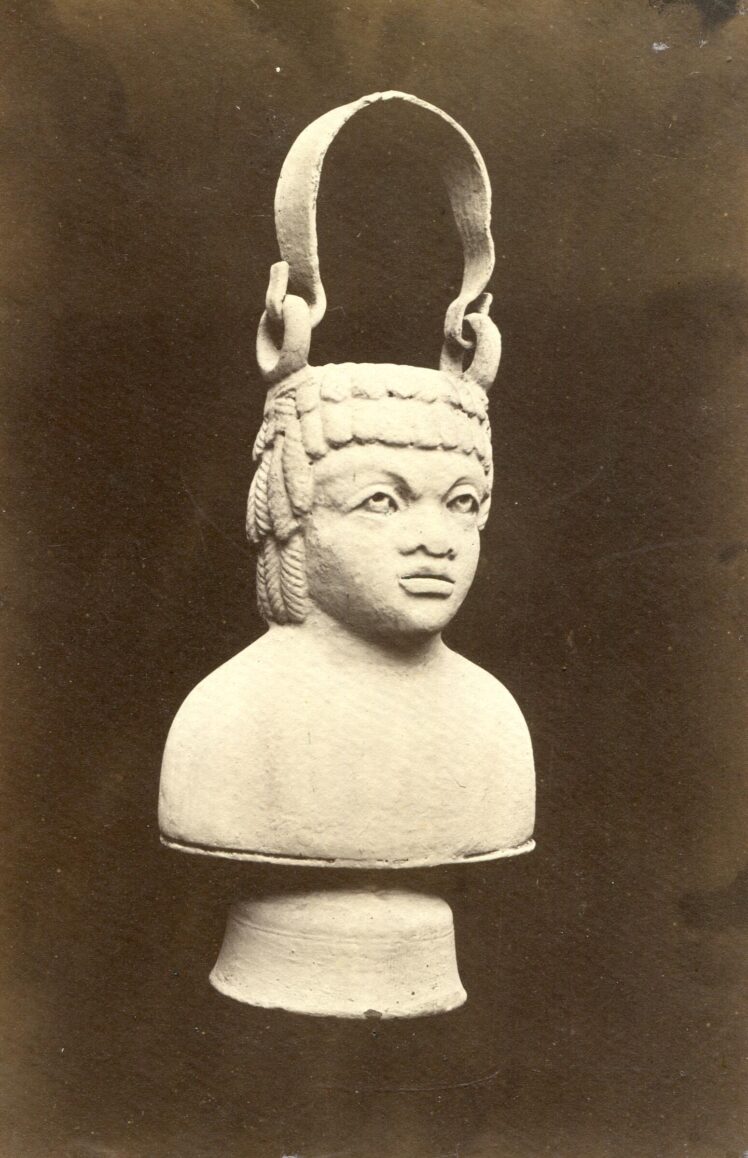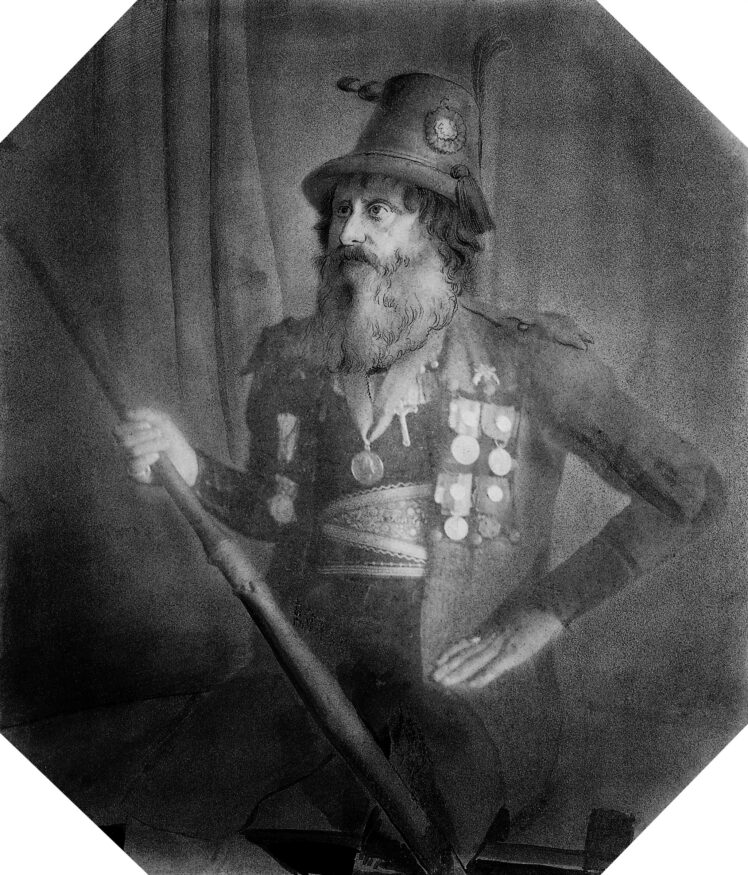Shortly after the patenting of the ‘permanent image’, as photography was called in its early days, Maria Vinzenz Süß (1802–1868), founder of the Carolino Augusteum Museum in Salzburg, recognised the importance of this medium for documenting works of art and cultural heritage. The collection therefore includes images of archaeological finds and an altarpiece from the early 1850s. Since its inception, the collection has also served to document Salzburg society, as demonstrated by a portrait of Johannes Panzl (1786–1862), a Landesverteidiger (member of the home guard), from 1853. The following decades were then devoted primarily to photographically documenting the city and province of Salzburg. The current collection has evolved from donations and bequests from Salzburg’s bourgeoisie, as well as from targeted acquisitions of individual pieces or entire collections to fill thematic or chronological gaps.

